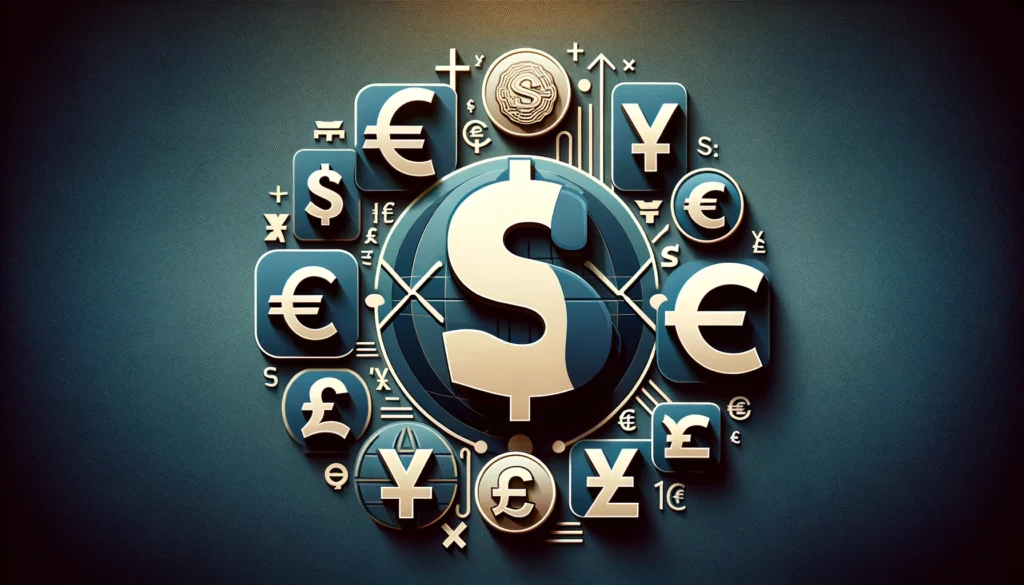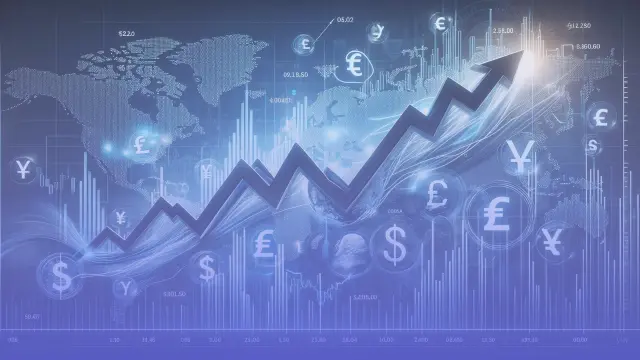Introduction to the World’s Strongest Currencies
Currency strength is not just about numbers; it’s a reflection of a nation’s economic health and its position on the global stage. Think of it as the financial world’s way of keeping score, where a strong currency signifies a country’s robust economic standing, much like a high credit score can reflect an individual’s financial reliability.
As we embark on this exploration, we’ll delve into the currencies that stand as financial titans in 2024, shedding light on the intricate dance of economic indicators, geopolitical stability, and market confidence that propels them to the top. Join us as we decode the stories behind these currencies, from the desert wealth of the Kuwaiti Dinar to the strategic policies securing the Swiss Franc’s value, offering insights into the economic prowess they represent.
Understanding Currency Strength
Understanding currency strength involves looking at a mix of economic health, political stability, and how much the world trusts and uses a currency. A strong currency usually means the country’s economy is doing well, with steady growth, reasonable inflation, and more exports than imports. It also suggests the country is politically stable, making it a safer place for investments. Central banks play a big part too, setting interest rates that affect how attractive the currency is to foreign investors. Higher rates often pull in more investment, boosting the currency’s value.
The global demand for a currency also affects its strength. Currencies widely used for international transactions or held as reserves by other countries are typically stronger. This is because there’s a constant need for these currencies, which keeps their value up. Being a reserve currency, like the US Dollar or the Euro, puts a currency in a special position of trust and widespread use, further enhancing its strength.
So, a strong currency reflects a combination of a healthy economy, political stability, strategic financial management, and international confidence. It’s not just about the numbers but the underlying factors that signal how robust and reliable an economy is on the global stage. For those interested in exploring how these factors play out in real-time market scenarios, understanding the most profitable forex trading strategies can provide deeper insights into how economic indicators and geopolitical events influence currency strengths and trading decisions. Moreover, for beginners keen on navigating the complexities of forex trading, our guide on proprietary trading for beginners offers a solid foundation in understanding market dynamics and developing effective trading strategies.

Top Strongest Currencies in 2024
As of 2024, the landscape of the world’s strongest currencies showcases a fascinating blend of economic stability, resource wealth, and fiscal policies that set these currencies apart. While the concept of strength can be subjective, based on various metrics, here are some of the currencies that have made their mark as the titans of financial strength:
1. Kuwaiti Dinar (KWD)
The Kuwaiti Dinar stands at the pinnacle of currency strength, largely due to Kuwait’s vast oil reserves, which account for nearly 10% of the world’s reserves. This resource wealth, combined with a relatively low population, ensures a high per capita income and substantial fiscal surplus for the country. Kuwait’s conservative fiscal policies and its significant foreign currency reserves further bolster the dinar’s value, making it the most valuable currency globally.
2. Bahraini Dinar (BHD)
Bahrain, while smaller in oil wealth compared to its Gulf neighbors, has successfully diversified its economy beyond oil, with strong sectors in finance and construction. The Bahraini Dinar’s strength is also underpinned by a fixed exchange rate with the US Dollar, ensuring stability and investor confidence. Bahrain’s strategic efforts to position itself as a financial hub in the Middle East contribute to the dinar’s robust standing.
3. Omani Rial (OMR)
Oman’s currency benefits from a mix of oil wealth and economic diversification strategies, including tourism and shipping. The country’s political stability, despite being in a region fraught with turmoil, has attracted investment and maintained the currency’s strength. The Omani Rial’s peg to the US dollar and Oman’s prudent fiscal policies, focusing on economic diversification, have helped preserve its value.
4. Jordanian Dinar (JOD)
The Jordanian Dinar reflects the resilience of Jordan’s economy, which, despite limited natural resources, has shown remarkable stability. Jordan’s strategic geopolitical position, aid from Gulf states, and strong banking sector contribute to the dinar’s strength. Additionally, Jordan’s efforts in tourism and information technology have bolstered its economy and, by extension, its currency.
5. British Pound Sterling (GBP)
The British Pound, one of the oldest currencies still in use, symbolizes the UK’s historical economic power. Despite challenges, including Brexit, the pound benefits from the UK’s large economy, significant global trading relationships, and London’s status as a financial capital. The pound’s strength is also a reflection of the Bank of England’s monetary policies and the UK’s extensive foreign reserves.
6. Swiss Franc (CHF)
The Swiss Franc is renowned for its stability, a hallmark of Switzerland’s economy. Switzerland’s neutrality, sophisticated banking sector, and strong legal system have made the franc a “safe-haven” currency. The country’s economy is bolstered by high-tech manufacturing, pharmaceuticals, and financial services, contributing to the franc’s strength. The Swiss National Bank’s policies also ensure low inflation and contribute to the currency’s value.
These currencies exemplify the complex interplay between natural resources, economic diversification, political stability, and strategic monetary policies in determining currency strength. Each has its own story, rooted in its country’s unique economic landscape and historical context.
Factors Contributing to Currency Strength
Currency strength is a multifaceted concept influenced by a variety of economic indicators and geopolitical factors. Understanding these factors is crucial in grasping why some currencies are stronger than others.
Economic Performance
The overall economic performance of a country is a fundamental determinant of its currency’s strength. A robust economy, characterized by strong GDP growth, low unemployment, and high productivity, instills confidence in investors and traders. Countries with stable and growing economies tend to have stronger currencies because they are seen as safe investments.
Inflation Rates
Inflation significantly affects currency value. Low inflation rates are indicative of a stable economy, which in turn strengthens the currency. High inflation erodes purchasing power and can lead to currency devaluation. Central banks closely monitor inflation to adjust monetary policy accordingly, aiming to maintain a balance that supports currency strength.
Interest Rates
Central banks set national interest rates, and these rates have a direct impact on currency strength. Higher interest rates offer lenders higher returns compared to other countries, attracting foreign capital to high-yield investments, which increases the value of the home currency. Conversely, lower interest rates tend to decrease a currency’s attractiveness.
Political Stability
Political stability is another critical factor. Countries that enjoy stable governance and consistent, investor-friendly policies are more likely to have a strong currency. Political turmoil, on the other hand, can cause uncertainty, leading to currency depreciation as investors seek safer assets.
Trade Balances
A country’s trade balance—the difference between its exports and imports—also plays a significant role. A positive trade balance, where exports exceed imports, can lead to a stronger currency due to higher demand for the country’s goods and, consequently, its currency. A negative trade balance can weaken the currency as more foreign currency is needed to pay for imports.
Reserve Currency Status
Being a reserve currency confers a significant advantage. Currencies that are held in large quantities by governments and institutions around the world as part of their foreign exchange reserves are inherently stronger. This status comes from a combination of trust in the currency’s stability, the size of the economy, and the currency’s use in international trade.
Global Demand
Finally, the global demand for a currency influences its strength. Currencies that are widely used in international transactions and are considered safe investments tend to be stronger. This demand can come from various sources, including the need to conduct trade in a particular currency, investment in a country’s financial markets, or the currency’s use as a hedge against uncertainty in global markets.
Each of these factors interplays with the others to determine a currency’s strength. While some elements are within a country’s control, such as policy decisions and economic management, others, like global demand and geopolitical developments, are influenced by external factors. Understanding these dynamics offers valuable insights into the complex world of forex trading and international finance.
Impact of Strong Currencies on Global Trade
Strong currencies have a multifaceted impact on global trade, influencing both the country with the strong currency and its trading partners. When a currency is strong, it can buy more goods and services abroad, making imports cheaper for residents of the strong currency country. This scenario can lead to an influx of foreign goods, benefiting consumers but potentially hurting domestic industries that cannot compete with the lower-priced imports. To better understand this dynamic, exploring the best trading strategies for volatile markets can provide insights into how traders navigate these changes.
For countries exporting goods to nations with strong currencies, the situation can be beneficial as their goods become cheaper and more competitive in those markets, potentially increasing export volumes. However, this dynamic can also lead to trade imbalances, with countries holding strong currencies running large trade deficits as the value of imports outpaces exports. An in-depth look at the role of technology in modern prop trading sheds light on how technological advancements are influencing global trade patterns and currency strengths.
Moreover, companies operating in countries with strong currencies might find it challenging to export their products, as their goods become more expensive for foreign buyers. This can lead to decreased competitiveness on the global stage, affecting the company’s revenue and overall economic growth in countries with strong currencies. For those navigating the complexities of international trade, why live trading is better than demo trading offers valuable perspectives on the real-world implications of currency fluctuations.
On the flip side, a strong currency attracts foreign investment, as investors seek to capitalize on the stability and potential returns offered by assets denominated in that currency. This influx of capital can boost financial markets but also lead to challenges like asset bubbles if not managed carefully. Understanding these dynamics is crucial for traders, investors, and policymakers alike to navigate the interconnected world of global finance and trade effectively.
In Conclusion
In wrapping up our exploration of the world’s strongest currencies and their impacts, it’s clear that currency strength is more than just a measure of economic health—it’s a reflection of a nation’s position in the global economic hierarchy. Strong currencies, from the Kuwaiti Dinar to the Swiss Franc, tell tales of economic stability, robust fiscal policies, and the global confidence placed in these currencies. However, while a strong currency may symbolize economic prowess, it also comes with its set of challenges, particularly in terms of global trade dynamics.
The delicate balance between reaping the benefits of a strong currency and managing its potential downsides is crucial for maintaining a healthy economy. Countries with strong currencies enjoy cheaper imports and attract foreign investment but must navigate the complexities of export competitiveness and trade imbalances.
As the global economic landscape continues to evolve, so too will the rankings of the world’s strongest currencies. Their stories are not just about the numbers but about the underlying economic strategies, geopolitical stability, and the adaptability of nations in an interconnected world. Understanding these dynamics offers valuable insights into the complexities of global finance and the ongoing dance of currencies on the world stage.







